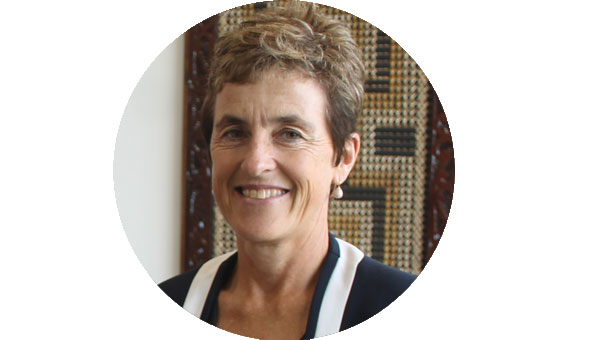Using data to drive reduction in unwarranted variation in care, cost of care, and improve patient experience and outcomes
Opportunity
Three general surgery clinical conditions (Acute Appendicitis; Acute Cholecystitis; Abscess) have been selected to prototype a clinical pathway quality improvement programme. The conditions were selected on the basis that that they represent almost two thirds of the all acute general surgery cases.
We know that a prolonged length of hospital stay results in patient dissatisfaction, additional cost and increased morbidity. We wanted to determine whether there are opportunities to improve the quality and value of care by improving efficiency (reduced length of stay) and reducing the cost of care.
Aim
Explore data about Appendicitis, Acute Cholecystitis and Abscess and identify opportunities to improve in relation to:
- efficiency of care
- evidence-based practice (eg identify unwarranted variation in practice)
- patient experience
- cost of care
Intervention
Data Sources
We used acute theatre booking data and inpatient coded data to determine the:
- Number of acutely admitted cases booked for theatre as acute cases per year, in the 2016 calendar year
- Average length of stay (LOS) in the 2016 calendar year
We used financial (costing) data to determine the:
- Total cost of each condition by year, in the 2016 financial year (FY)
- Average cost per day of the hospital stay for each admission, in the 2017 financial
Analytical Approach
We identified a ‘healthiest’ group of patients: patients with an ASA score of 1 or 2 and a length of stay <5 days. And we identified the best achievable length of stay from a clinical perspective - a length of stay that would result in the best patient experience and safe treatment:
- Appendectomy and Abscess Drainage <24hours
- Cholecystectomy 24 – 48 hours
We calculated the cost savings of a reduced length of stay for ASA 1 and ASA 2 patients. We then postulated several methods of achieving this length of stay for the ‘healthiest’ patients
From a total general surgery budget of $60 million, we calculated the costs per annum for each of the top 3 acute general surgery procedures for the FY2016 (limited to acute cases where these were the primary procedure):
| Condition | Costs per Annum |
| Abscess Drainage | $2.29 million |
| Appendectomy | $3.22 million |
| Cholecystectomy | $3.05 million |
We calculated the current average length of stay (LOS) using FY2016 data and acute cases where the three selected procedures were the primary procedure:
| Condition | Ave LOS | Target LOS |
| Abscess Drainage | 2.3 days | <24 hours |
| Appendectomy | 2.8 days | <24 hours |
| Cholecystectomy | 5.5 days | <48 hours |
Analysis: Abscess Drainage
- 638 Acute cases were booked for abscess drainage in 2016
- 549 (86%) of these cases were ASA 1 and 2
- 94% of ASA 1 and 2 cases currently stay up to 4 days
Cost by average length of stay for ASA 1 and 2 cases (2017 FY data) were:
| Costs for ASA 1 & 2 | Ave LOS | % Cases |
| $2,393 | <24 hours | 27% |
| $2,957 | 24-72 hours | 60% |
| $6,362 | >72 hours | 13% |
Total saving if ASA 1-2 cases staying 1-4 days had a LOS reduced to <24 hours:
| ASA 1 & 2 Cases | Total Savings |
| All cases (n~500) | $221,974 |
| 75% cases (n~400) | $166,480 |
Analysis: Appendectomy
- 549 Acute cases were booked for appendectomy in 2016
- 531(97%) of these cases were ASA 1 and 2
- 85% of ASA 1 and 2 cases currently stay up to 4 days
Cost by average length of stay for ASA 1 and 2 cases (2017 FY data) were:
| Costs for ASA 1 & 2 | Ave LOS | % Cases |
| $4,854 | <24 hours | 3% |
| $5,918 | 24-72 hours | 71% |
| $9,745 | >72 hours | 26% |
Total saving if ASA 1-2 cases staying 1-4 days had a LOS reduced to <24 hours:
| ASA 1 & 2 Cases | Total Savings |
| All cases (n~500) | $578,920 |
| 75% cases (n~400) | $434,190 |
Analysis: Cholecystitis
- 285 Acute cases were booked for appendectomy in 2016
- 230 (81%) of these cases were ASA 1 and 2
- 42% of ASA 1 and 2 cases currently stay up to 4 days
Cost by average length of stay for ASA 1 and 2 cases (2017 FY data) were:
| Costs for ASA 1 & 2 | Ave LOS | % Cases |
| $8,064 | <24 hours | 7% |
| $8,623 | 24-72 hours | 15-20% |
| $13,251 | >72 hours | 70-80% |
Total saving if ASA 1-2 cases staying 1-4 days had a LOS reduced to <24 hours:
| ASA 1 & 2 Cases | Total Savings |
| All cases (n~500) | $236,370 |
| 75% cases (n~400) | $177,277 |
Overall Analysis
Findings from the analysis for the “healthiest” group of patients (ASA 1 and 2):
| Procedure | Current LOS | Target LOS | Potential Cost Saving |
| Abscess Drainage | 2.3 days | <24 hours | $166,480-$221,974 |
| Appendicectomy | 2.8 days | <36 hours | $434,190-$578,920 |
| Cholecystectomy | 5.5 days | <72 hours | $177,277-$236,370 |
For the three pathways, a total of $750k - $1million* could be saved in one year if LOS targets were met for acutely admitted ASA 1 and 2 patients.
* Range covers calculations for
- Reducing LOS for 75% and 100% of relevant patients
- Patients booked as acute cases +/- acute arranged cases
Distribution of Length of Stay for ASA 1 and 2 Patients
We calculated the average length of stay for all ASA 1 and 2 patients for each of the three conditions in 2016. And we calculated the average length of stay for each of three phases of a patient’s stay: admission to booking; booking to theatre; theatre to discharge:
We calculated the average total length of stay for ASA 1 and 2 patients staying <5 days:
The distribution of length of stay identifies opportunities to improve efficiency and patients’ experience in each of the three phases of patients’ admission:
- from the time of admission to theatre being booked (investigations and diagnosis)
- from the time theatre is booked to getting patients to theatre (access to theatre)
- from the time from when the patient leaves theatre to discharge (post-operative recovery on the ward).
The data shows that the post-operative period (3) is the phase that contributes most to patients’ length of stay and provides an opportunity for early improvement with improved discharge planning and a streamlined discharge process.
Further Potential Analysis
Analysis of the data has yet to be completed to identify compliance with the pathways and unwarranted variation in clinical practice (for example, variation in laboratory testing, radiology investigation, and antibiotic prescribing); and accuracy of diagnosis (normal/abnormall pathology).
Impact
The i3 is supporting the Department of General Surgery to undertake a quality improvement project for the three acute general surgery clinical pathways: Appendicitis, Acute Cholecystitis and Abscess, with the aim of:
- Improving patient experience
- Improving efficiency of care (reducing length of stay)
- Reducing unwarranted variation in practice
- Reducing the cost of care
Team Members
Sponsors
- Penny Andrew, Director of i3
- Mr Richard Harman, Clinical Director, General Surgery
Team Members
- Carlene Lawes, i3 Public Health Physician - Surgical + Ambulatory Services
- Delwyn Armstrong, i3 Head of Analytics
- Monique Greene, i3 Information Analyst
- Renee Kong, i3 Innovation + Improvement Project Manager

Dr Carlene Lawes

Monique Greene

Delwyn Armstrong

Renee Kong




